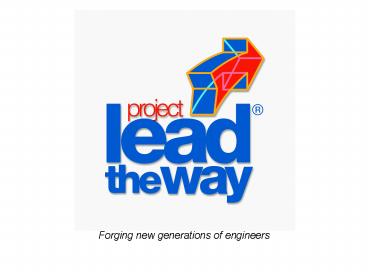Introduction to RoboPro - PowerPoint PPT Presentation
1 / 39
Title:
Introduction to RoboPro
Description:
Forging new generations of engineers ROBO Pro Software for fischertechnik Setting up the Interface Checking the Interface The Element Window The Flow Chart Motor ... – PowerPoint PPT presentation
Number of Views:50
Avg rating:3.0/5.0
Title: Introduction to RoboPro
1
Forging new generations of engineers
2
- ROBO Pro Software for fischertechnik
3
ROBO Pro Screen
Set to Level 1 Beginners
Element Window
Toolbar
Program Window
4
Setting up the Interface
Select the type of Interface and port to connect
to.
5
Checking the Interface
Inputs
Outputs
Analog Inputs
Interface Status
6
The Element Window
Program elements are icons that, when selected,
access instruction sets in the ROBO Pro software
to perform the operations identified by the
icons. They are located on the left hand side of
the screen
7
The Flow Chart
When Program Elements are placed on the screen
and connected, a Flow Chart is created.
This Flow Chart is the program that runs the
instruction sets
8
Programming
Graphic Programming
BASIC Programming
Sample Instruction Sets
Icons
500 INIT
510 If E1 1 THEN GOTO 530 520 GOTO 510
530 CALL M1 On
540 END
9
Motor Output
The Motor Outputs can be set to run an
electromagnet, lamp, or motor.
Select interface box connection
Choose device
Select speed, brightness or intensity
Choose action
10
Motor Outputs
11
Start End
The Start and Stop Function Blocks begin and end
a program.
12
The program to control two output devices might
look like this
Outputs
Start Program
M1 Output On
M2 Output On
End Program
13
Time Delay
The Time Delay is used to introduce a delay in a
program.
A time step can be set for seconds, minutes or
hours
14
Digital Inputs
- Inputs
- The Input function block queries the state of
a digital input I1-I8 on the interface. They many
be a Pushbutton switch, Photo-transistor, or a
Reed contact. - A digital input can only have one of two states,
0 or 1. - Examples
- Pushbutton switch Pushed or not pushed
- Photo-transistor Light or Dark
- Reed Contact Switched or not switched
15
Digital Inputs
Phototransistor (light sensor)
Switch (pressure sensor)
Reed Contact (magnetic sensor)
16
Digital Inputs
The Digital Inputs can be set as a variety of
switch mechanisms including Pushbutton Switch,
Photo-transistor, or Reed Contact.
Digital Inputs connect to I1-I8 on the interface
17
Text
The Text tool is used to display information on
the program page.
18
Wait for Input
- Waits for the input to change in a particular way
19
Wait for Input
Wait for Input is simpler and easier than using
the Digital Input icon for some applications.
20
Counter Loop
With the Counter loop you can execute a specific
part of the program several times.
21
Counter Loop
This counter loop allows a light to flash on for
2 seconds, then off for 2 seconds, 10 times
before stopping the program.
22
Analog Branch
With the Analog Branch you can compare the value
of an analog input with a fixed number and,
according to the result, branch to the Yes (Y) or
No (N) exit.
Set the condition and enter The comparison value
23
Analog Branch
This Analog Branch uses a photocell sensor to
determine if the reading (value of AX) is greater
than 800. When it is, the light is turned off and
the program ends.
24
Going Farther
- There are times when more options are needed in a
program. - By selecting Level 4 more programming options
become available in addition to the basic
elements.
25
Variables
Variables are accessed from the element window.
26
Variables
- Variables hold values to allow the program to
make decisions.
The variable can be named anything.
27
Commands
- Commands are used to change the value of
variables.
28
Branch and Wait
Decisions are made on variables using commands
from the Branch and Wait section.
29
Variables
- A Variable can be used to count as in this
example. The variable Dogs is increased by one
each time through the loop until its value is
greater than 3. The program then ends. The
Variable blocks are named the same eliminating
the direct connection.
30
Inputs and Outputs
Inputs and outputs are used to affect variables
and to display their value.
31
Variables
- A variable can be used to store a value. In this
example the value of a CdS photocell is stored
(input) as a variable and used to determine which
way a motor will turn.
32
Operators
Operators allow us to combine or compare two
variables using mathematics or logic
33
Panel Elements
- Panel Elements are use to build a display or
control board to interact with a Fischertechnik
model.
34
Displays
- There are times when the value should be
displayed on the screen.
35
Setting up a display
Text Displays can be customized
36
Displays
Panel displays are used to assign the output
device
37
Sub-Programs
- Subroutines are used to create pieces of a
program that can be used many times in different
places.
38
Subprogram utilizing the Entry and Exit commands
39
Subprograms
Once saved the subprogram is ready to be used
from the loaded programs.






























